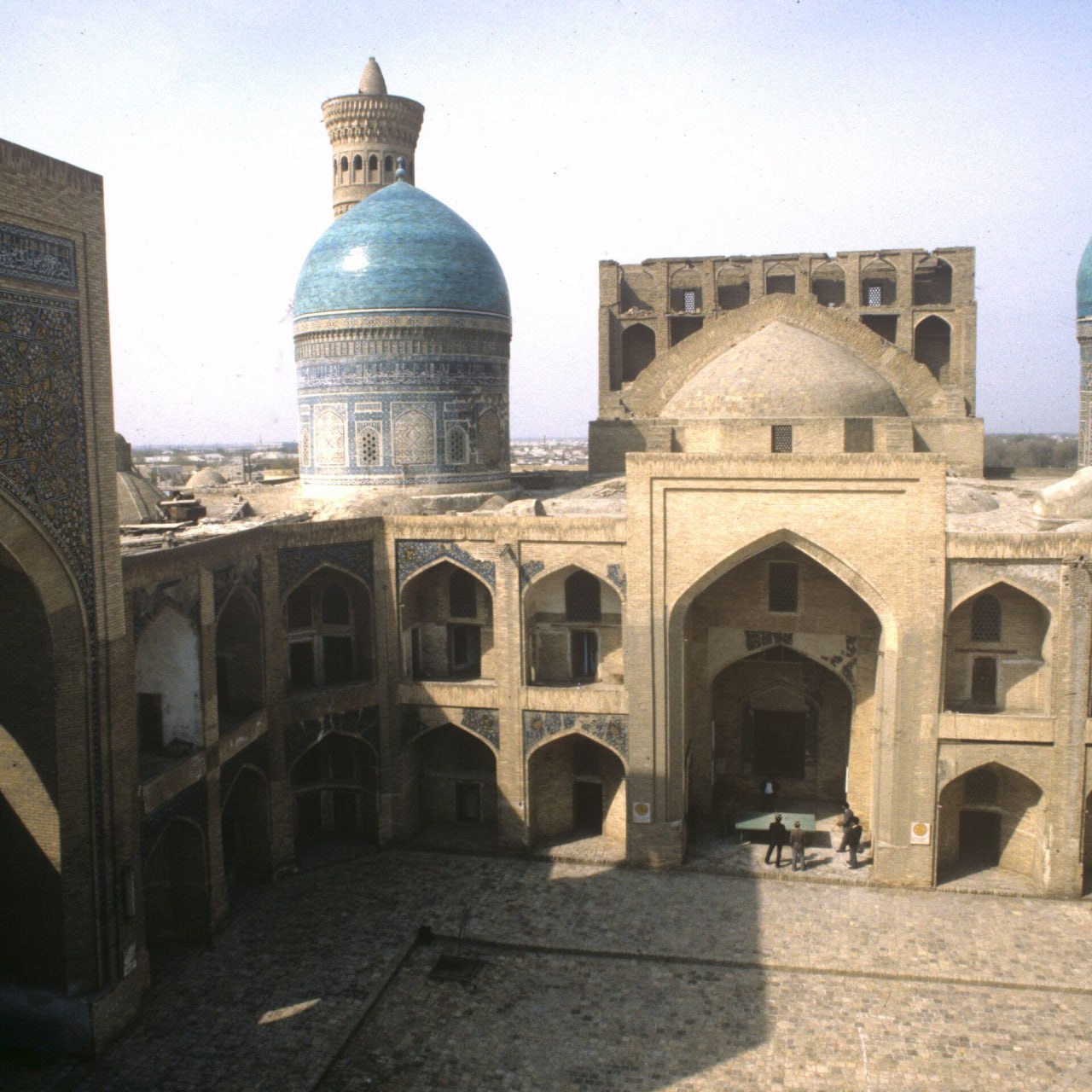What is reflected in the media project of the founder of the first madrasa in Bukhara?

In the 8th century, thanks to the founder of the madhhab, Abu Hanifa, the Hanafi school began to spread starting from the middle of the century, and by its end, it reached regions such as Maveraunnahr. The schools of Iraq and Khorasan had a significant influence on the formation of Hanafi centers in various cities. The scholar and student of Imam Muhammad ibn Hasan al-Shaybani, Abu Hafs Ahmad ibn Hafs al-Kabir al-Bukhari (768–832), became one of the founders of the first madrasahs in Bukhara.
His full name was Ahmad ibn Hafs ibn Zaburkon ibn Abdullah ibn Bukhari. After mastering all possible sciences in his homeland, he went to Baghdad, where he studied under Imam Muhammad. Upon returning home, he became the first to bring the Hanafi teachings to Maveraunnahr.
Abu Hafs Ahmad ibn Hafs al-Kabir al-Bukhari founded madrasahs, which became well-known and influential centers of scientific and religious knowledge. These madrasahs were recognized as some of the best in the Islamic world at that time. Historian Wamber in his "History of Bukhara" and al-Saadi in "Tarikh ad-Duwal" note that the madrasahs of Imam Abu Hafs al-Kabir al-Bukhari were considered the dream of scholars and students across the entire Islamic world.
The Center of Islamic Civilization in Uzbekistan has developed a media project titled "Abu Hafs al-Kabir – Founder of the First Madrasah in Bukhara." The project explores his scientific and educational legacy. Based on the collected information, an electronic map, videos, a model of the first madrasah, and interactive games will be prepared and featured in the Center’s exhibition.
For reference, according to the President's instructions, the goal of the mega-project in Uzbekistan is to showcase the contributions of our ancestors to world civilization through the exhibition of the Center of Islamic Civilization, to educate the youth in the spirit of respect for the great historical heritage, and to create conditions for conducting scientific discussions, presenting relevant ideas, and developing new scientific content. To this end, the exhibition will be supplemented with more than 2,000 local and foreign scholars and specialists. More than 800 projects have already been developed and will be implemented in three phases. Currently, the first phase has begun, and more than 400 projects are actively being discussed with members of the scientific council.
Most read

Over 100 experts from more than 20 countries of the world are in Tashkent!

President of Serbia Aleksandar Vučić visited the Islamic Civilization Center in Uzbekistan

The Center for Islamic Civilization – a global platform leading towards enlightenment











